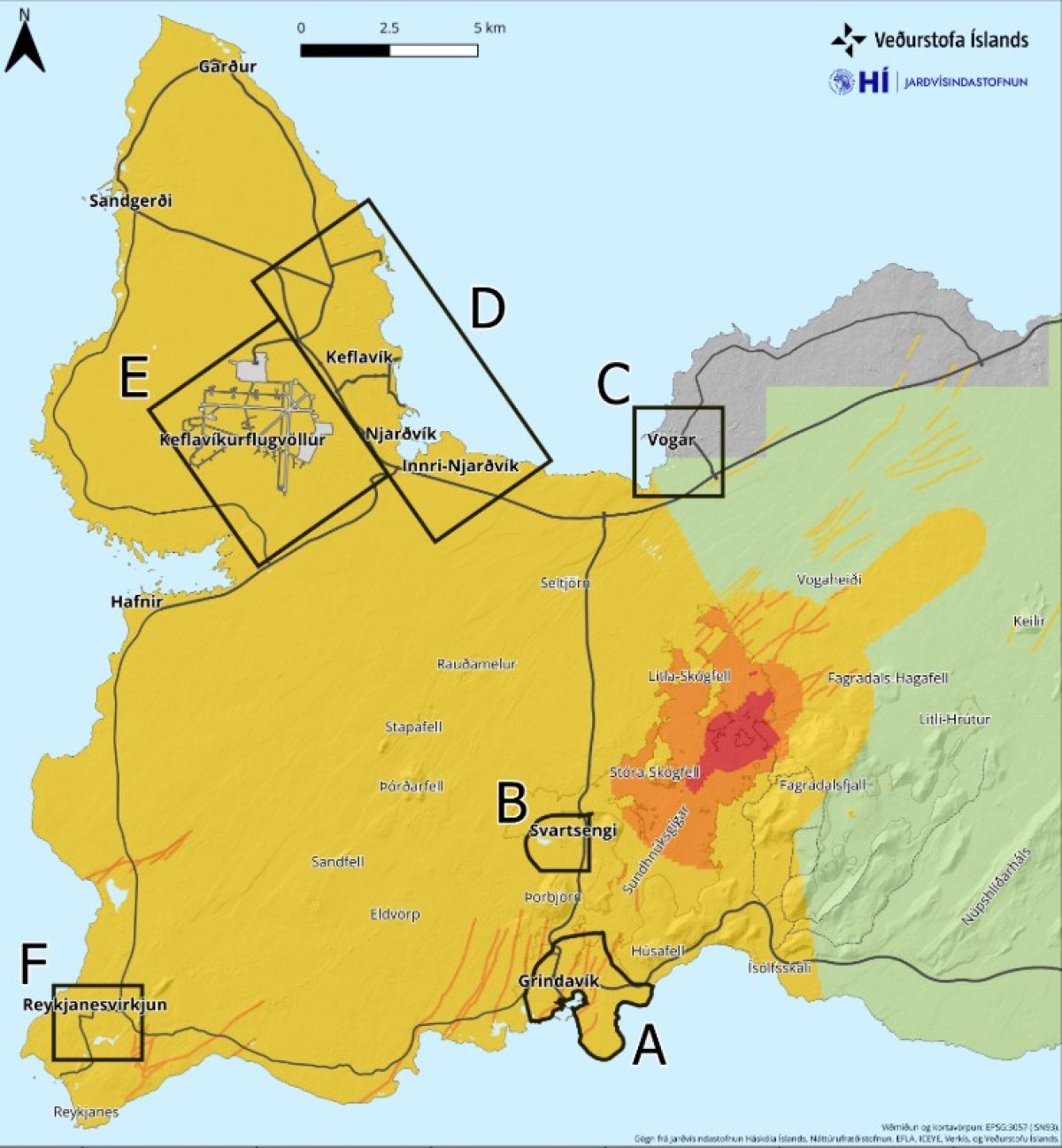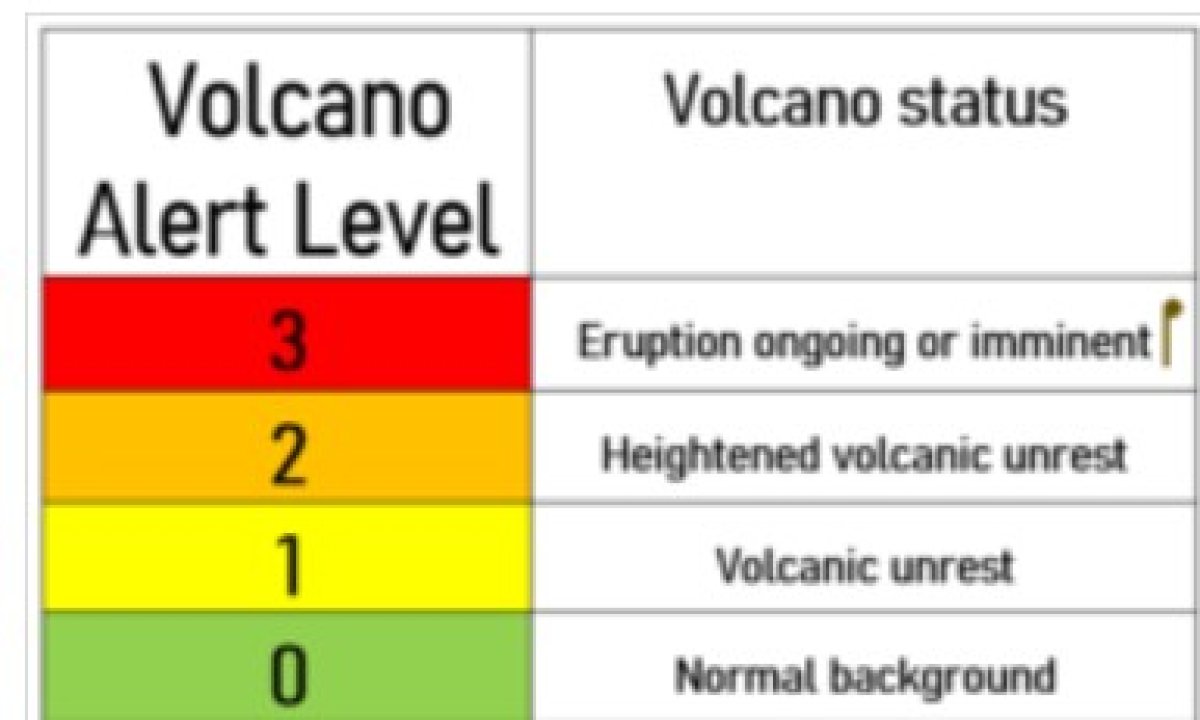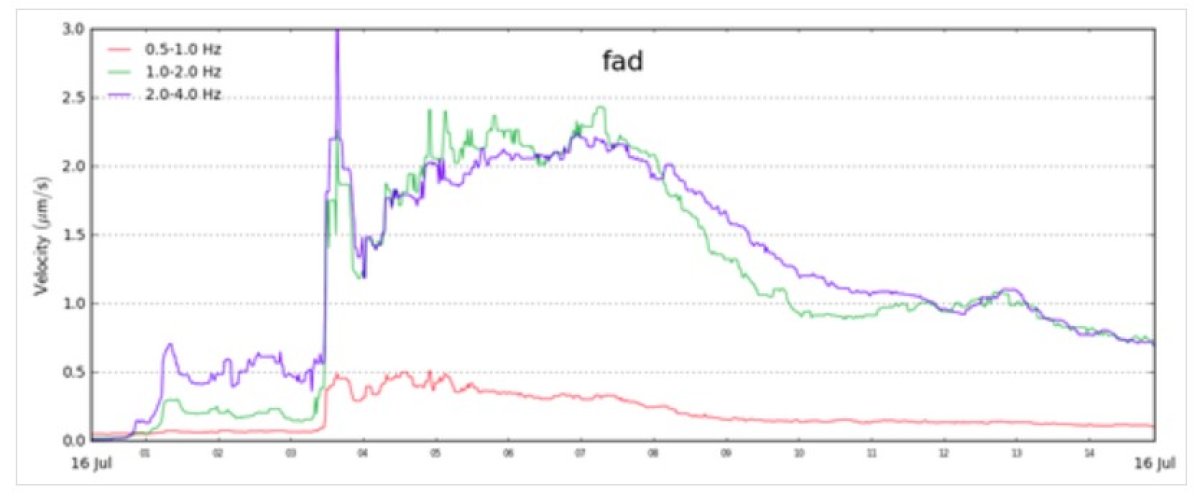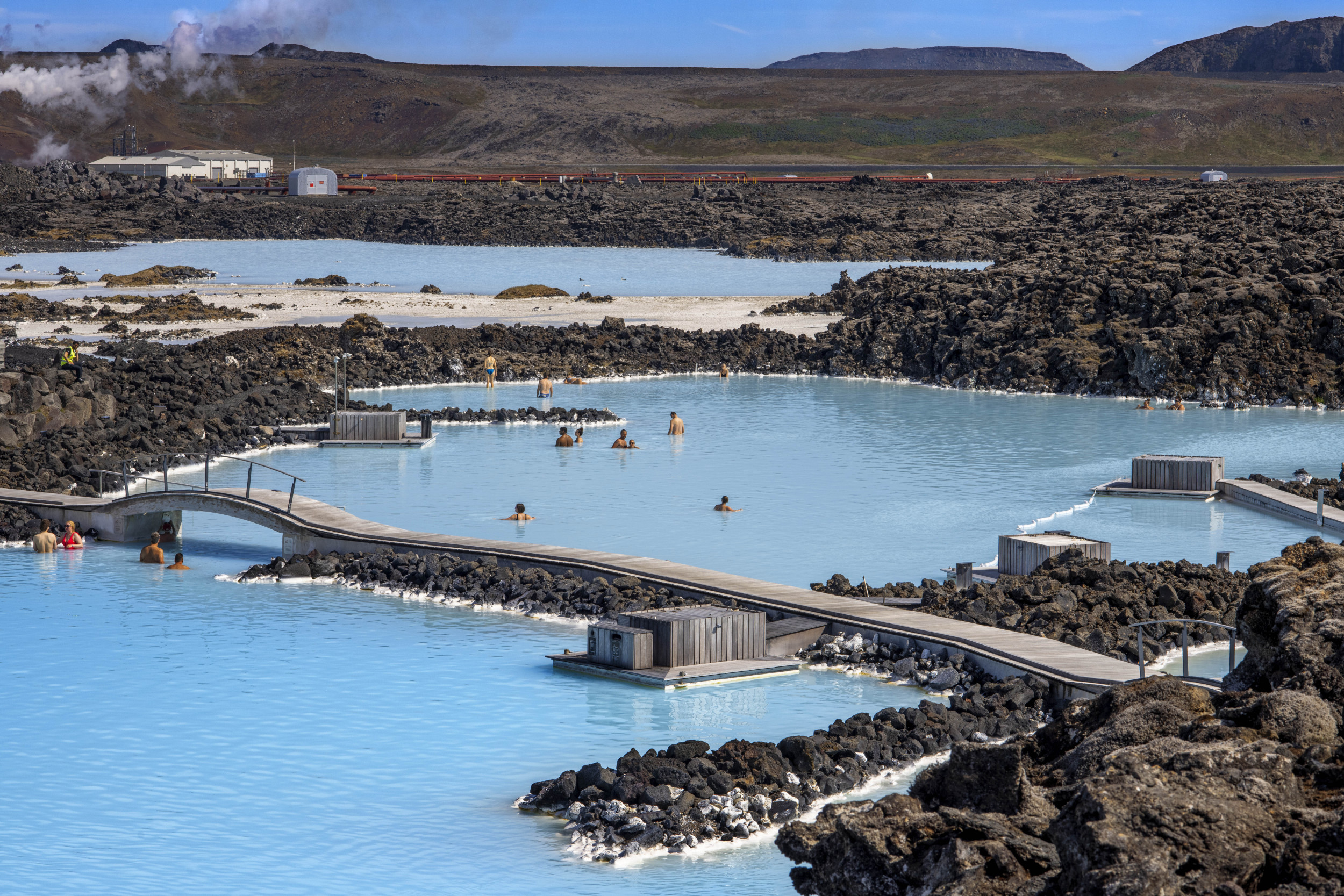A volcanic eruption in Iceland sparked the evacuation of the world-famous Blue Lagoon geothermal spa and surrounding areas on Wednesday.
What To Know
- The eruption began around 4 a.m. on the Reykjanes Peninsula, southwest of the capital, Reykjavik, Iceland’s Met Office said.
- It was preceded by intense seismic activity which prompted the evacuation of around 100 from the town of Grindavik.
- Tourists at a nearby campsite and guests at the Blue Lagoon were also forced to urgent pack and evacuate.
- There have been no reports of injuries but officials warned people to stay indoors and take precautions due to a toxic gas cloud caused by the eruption.
Newsweek’s live blog is closed.

FILE -Panoramic view of the eruption site with the Blue Lagoon area to the right and the active fissure in the far background after the volcanic eruption that started on the Reykjanes Peninsula in Iceland,…
Marco di Marco/AP
WATCH: Wall of fire shoots up into the air above approaching lava
What a sight! 🌋🔥 Lava lights up the sky in jaw-dropping drone footage during a new eruption on Iceland’s Reykjanes Peninsula on Wednesday, prompting evacuations in the surrounding area. pic.twitter.com/T5fsmtltgG
— AccuWeather (@accuweather) July 16, 2025
New hazard map shows most of Reykjanes Peninsula under alert
The Icelandic Meteorological Office (IMO) has issued an new hazard map showing much of the Reykjanes Peninsula under alert after the eruption began on Wednesday morning.
The red zones remain at the highest volcanic alert level, 3, while much of the area is at risk of “volcanic unrest.”
The IMO also offered the following update on the eruption:
- The eruptive fissure has lengthened and now extends farther north than previous fissures since December 2023.
- Lava flow continues but has decreased in intensity.
- Most of the lava is accumulating east of the fissure and is likely to fill depressions in the area.
- Seismic activity has decreased significantly, now measuring only a few small earthquakes per hour.
- Gas emissions and wildfires continue to contribute to pollution.

New hazard map released by Icelandic Meteorological Office. Much of the area is under a hazard risk with the red and orange zones at danger of an ongoing eruption or heightened volcanic unrest.
Icelandic Meteorological Office

New hazard map legend from Icelandic Meteorological Office
Icelandic Meteorological Office
New graphic shows seismic activity slowing
A new graphic, from the Icelandic Meteorological Office, shows that volcanic tremors and seismic activity have been declining since the eruption early Wednesday morning.
The readings were taken at seismic station Fad, north of Fagradalsfjall, while the lines represent vibration strength across different frequency bands.

A graphic on volcanic tremor and activity from Icelandic Meteorological Office. Measurements show a decline in its intensity since this morning. The image displays the development of tremor measurements at seismic station Fad, north of…
IMO
What was the last major Icelandic eruption?
The 2010 eruption of Eyjafjallajökull in Iceland was a dramatic volcanic event that gained global attention primarily because it disrupted international air travel on an unprecedented scale.
When Eyjafjallajökull erupted beneath its glacier on April 14, 2010, magma came into contact with ice, causing powerful explosions that sent vast amounts of fine ash high into the atmosphere. This ash was especially dangerous for aircraft, as it could clog engines and damage flight systems.
The volcanic ash entered the jet stream and spread rapidly across Europe, blanketing large sections of airspace.
Impact on international travel
The 2010 eruption of Eyjafjallajökull caused massive disruption to global air travel, grounding over 100,000 flights and affecting more than 10 million passengers. Airspace closures across more than 20 European countries led to estimated airline losses of $1.7 billion USD, exposing the industry’s vulnerability to natural disasters like volcanic ash, which poses serious risks to aircraft engines.
It became the largest shutdown of European air traffic since World War II, highlighting the far-reaching impact of natural disasters on global transportation.
Iceland’s latest eruption poses no major threat, officials say
Iceland’s Reykjanes Peninsula erupted again early Wednesday, but experts say the event is relatively minor. The fissure, located near the Sundhnúkur crater, spans roughly 700 to 1,000 meters, with lava flowing southeast, away from populated areas and infrastructure.
“There is no immediate threat to populated areas or key services,” the Icelandic Meteorological Office confirmed, citing low magma output and stable GPS readings. Civil defence teams evacuated nearby zones, including Grindavík and the Blue Lagoon spa, as a precaution.
Unlike explosive eruptions, this low-ash fissure event is unlikely to disrupt air travel. It marks the twelfth eruption on the peninsula since 2021, signaling a long-term volcanic cycle that scientists expect to continue for years.
Iceland enters new volcanic era as Reykjanes erupts again
The Reykjanes Peninsula in southwestern Iceland erupted once more on July 16, continuing a dramatic geological shift that began in 2021 after 800 years of dormancy. The latest fissure eruption at Sundhnúkur Crater Row marks the ninth event in the region since December 2023 and the twelfth since the peninsula reawakened.
Experts say the area has entered a new volcanic cycle, with magma expected to surface regularly for years, possibly decades. The eruption prompted evacuations of Grindavík and the Blue Lagoon spa, though lava flows are currently confined to uninhabited zones.
Scientists are closely monitoring the region’s shield volcano behavior, noting minimal ash but significant gas emissions and glass-like volcanic fibers known as “witch’s hair.” Despite the activity, Iceland’s infrastructure and air travel remain unaffected.
Officials say eruption was relatively small
Iceland’s latest volcanic eruption is relatively small, the Icelandic Meteorological Office said Wednesday.
“There is no immediate threat to populated areas or key services,” the IMO said.
There are now two fissures, including one over 6,500 ft long, but the lava flows are heading southeast, away from all critical infrastructure.
The IMO said that that unlike previous explosive eruptions in Iceland, which can release huge ash plumes, this one is unlikely to affect air travel.
Blue Lagoon remains closed as eruption continues
The famous Blue Lagoon in Iceland remains closed as the eruption continues on Wednesday.
Tourist site, Guide to Iceland, say that tours and road trips round the island are still running despite the lava flows and gas clouds.
Flights also remain unaffected.
Iceland’s fiery saga continues! 🌋
The 9th eruption at Sundhnúkur crater row features a 700 m fissure with lava spewing several meters high 🤯
Flights are unaffected 🇮🇸
Blue Lagoon is temporarily closed.
Tours and road trips continue as usual! 🚙
📸: RÚV pic.twitter.com/yqloTnuOSz
— Guide to Iceland (@guidetoiceland) July 16, 2025
Icelandic Met Office warns of harmful ‘witches’ hairs’ after eruption
The Icelandic Met Office (IMO) is warning residents and tourists alike of harmful “witches’ hairs” which are being carried by the wind after the eruption.
“These are tiny glass fibers that form when lava flows cool rapidly and expand,” the IMO said in a statement.
“They are light and can travel long distances. Witches’ hairs can cause discomfort to the skin and eyes, and people are therefore urged to be careful outdoors near the eruption sites.”
Residents have also been urged to stay inside, close their windows and turn off air conditioning amid high levels of gas pollution in Reykjanesbær.
Second lava fissure opens up in Iceland eruption
A second lava fissure has now opened in Iceland’s Grindavik region amid the ongoing eruption.
The new fissure, which can be seen in aerial images of the crater, opened hours after burning lava burst through the first in the early hours of Wednesday morning.
That first fissure has already grown to more than 6,500 feet, former Iceland president Ólafur Ragnar Grímsson said on X.
Expansion of the new volcanic eruption in the #Grindavik region. A new opening of burning lava in addition to the one from last night which already is over 2 km long. pic.twitter.com/xdukuPFUo7
— Ólafur Ragnar Grímsson (@ORGrimsson) July 16, 2025
Where is the Reykjanes Peninsula?
The Reykjanes Peninsula is located in southwestern Iceland, extending from the capital region of Reykjavík westward toward the Atlantic Ocean.
It is the site of Keflavík International Airport, Iceland’s main gateway for international flights, and is known for its dramatic volcanic landscapes, geothermal activity, and black lava fields.
What to know about Iceland’s current evacuation orders
Evacuation orders were issued in in southwestern Iceland in the early hours of Wednesday during a period of heavy seismic activity moments before the eruption.
Grindavík Town
Authorities issued an evacuation order for the town of Grindavík at 4 a.m. local time near the Sundhnúkur crater row. Over 100 residents and visitors were evacuated in under 90 minutes, according to local officials.
Blue Lagoon Spa and its surrounding areas
The famous Blue Lagoon geothermal spa, along with nearby campsites, were also evacuated as a precaution. Lava flows are currently heading toward uninhabited terrain, posing no immediate threat to infrastructure.
What to know about Iceland’s volcanos
Iceland sits directly on the Mid-Atlantic Ridge, where the North American and Eurasian tectonic plates are drifting apart. This rift runs straight through the island and causes frequent volcanic and seismic activity. Additionally, Iceland is fueled by a hotspot (a mantle plume), creating extra heat and magma beneath the surface—similar to Hawaii.
Iceland has about 130 volcanic mountains, many of which are still active. The country is divided into several volcanic zones:
- Reykjanes Peninsula (including Grindavík and Fagradalsfjall): Reawakened in 2021 after more than 800 years of dormancy.
- Hekla: One of the most active in Iceland, with over 20 eruptions in recorded history.
- Katla: Powerful and closely monitored, located under the Mýrdalsjökull glacier.
- Eyjafjallajökull: Famously erupted in 2010, disrupting global air travel.
- Askja, Bárðarbunga, and Grímsvötn: Large central volcanoes in Iceland’s interior, often under glaciers.
Thanks to its many volcanos, Iceland is a world leader in volcanic monitoring. The Icelandic Meteorological Office (IMO) and University of Iceland closely track seismic activity, gas emissions, and ground deformation using GPS networks, seismometers, drones and satellite imagery.
How many eruptions have there been in Iceland’s Reykjanes Peninsula?
Wednesday’s dramatic eruption is the 12th eruption in the Reykjanes Peninsula since 2021.
The Sundhnukur volcano eruption is also the ninth in the area since December 2023. The Sundhnukur crater lies between the town of Grindavik and the Blue Lagoon spa.
In November 2023, an eruption sparked the evacuation of Grindavik, which at the time had nearly 4,000 residents. It was the first time in around 50 years that an entire town had to be cleared during an eruption in Iceland.
Grindavik has remained more or less empty since the 2023 evacuation.
Ex-Icelandic president shares image of eruption
Ólafur Ragnar Grímsson, the former president of Iceland until 2016, has shared an aerial image of the Sundhnukur eruption.
“The creation of the Earth is still going on in Iceland,” he said in a post on X on Wednesday.
What is the Blue Lagoon?

People bathing in The Blue Lagoon, a geothermal bath resort in Iceland, Reykiavik (Sergi Reboredo / VWPics via AP Images)
Sergi Reboredo/AP
The Blue Lagoon in Iceland is a world-famous geothermal spa located in a lava field near Grindavík, about 45 minutes from Reykjavík.
Its milky blue waters are rich in silica, algae, and minerals, giving the lagoon its distinctive color and reputed skin-healing properties. Originally formed from the runoff of the nearby Svartsengi geothermal power plant, it has been open to the public since 1987 and has become one of Iceland’s top attractions.
The spa is especially popular for its unique setting—surrounded by black volcanic rock and often enjoyed while snow falls or the Northern Lights dance overhead. Its proximity to Keflavík Airport makes it a convenient stop for travelers entering or leaving Iceland.
The combination of wellness, striking visuals, and accessibility has earned it global acclaim, drawing tourists, celebrities, and wellness seekers from around the world. It’s also inspired its own skincare line and remains a symbol of Icelandic innovation and natural beauty.
WATCH: Drone footage captures lava lighting up the sky over Iceland
What a sight! 🌋🔥 Lava lights up the sky in jaw-dropping drone footage during a new eruption on Iceland’s Reykjanes Peninsula on Wednesday, prompting evacuations in the surrounding area. pic.twitter.com/T5fsmtltgG
— AccuWeather (@accuweather) July 16, 2025
Massive toxic gas cloud moving towards airport after eruption
A huge cloud of sulfur dioxide gas is heading towards Iceland’s international airport after Wednesday’s volcanic eruption.
The NIH warns that short-term exposure to high levels of sulfur dioxide can be life-threatening, with symptoms that can include corrosive damage to the airways and lungs, as well as nausea, vomiting, stomach pain.
At lower levels, exposure can cause nose and throat irritation.
The Icelandic Meteorological Office reports that the cloud is being driven north towards the town of Keflavik. The officer reports that a change in wind conditions on Thursday is likely to take the cloud directly over Iceland’s main airport, Keflavík International.
Residents are urged to closely monitor the air quality and move from the area if they begin to experience symptoms.
Lava flowing from around 3,000ft fissure in the landscape
Lava from the Grindavik eruption is flowing out of a giant fissure which is around 2,296 to 3,280 feet wide.
The flow is not set to impact any infrastructure on its current course, Iceland’s Met Office said.
Local police commissioner, Margrét Kristín Pálsdóttir, told the Associated Press that the surrounding areas had been evacuated in under 90 minutes since the eruption began.
“Of course, people have different opinions on whether the evacuation is necessary, but it is a decision we make and take responsibility for,” she said.
WATCH: Incredible lava flows in Iceland as Grindavik erupts
Alle 05:54 (ora italiana) è iniziata una nuova eruzione vicino #Grindavík, in #Islanda! Si tratta della nona eruzione della serie. La frattura eruttiva, lunga 2 km, si è aperta a nord del campo lavico, a distanza di sicurezza dalla città e dalla Blue Lagoon. Ecco un riassunto! 🧵 pic.twitter.com/wj1iWHjYss
— Il Mondo dei Terremoti (@mondoterremoti) July 16, 2025





